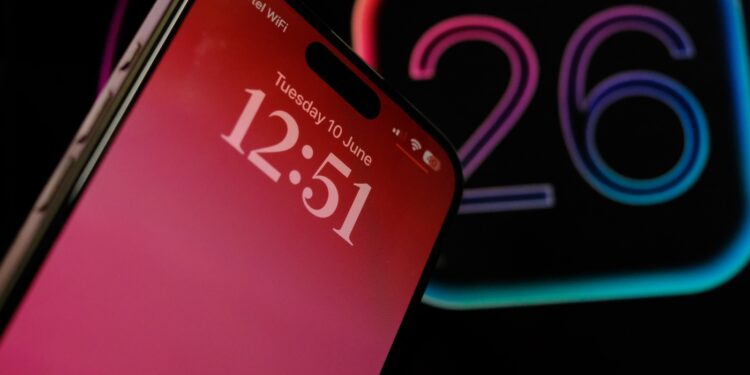With iOS 26, Apple is introducing two new Wi-Fi features that are intended to bring noticeable improvements, especially in everyday life: Captive Assist and Wi-Fi Aware. These features make using public networks easier and, for the first time, give app developers access to wireless peer-to-peer connections beyond AirDrop and AirPlay. These changes are no coincidence—Apple is also responding to EU regulations.
iOS 26 is being touted as a major design update, but it also brings some important technical changes behind the scenes. The Wi-Fi functionality is a good example of how Apple is introducing smaller but impactful features to address existing hurdles while also meeting regulatory requirements. Users in Europe will benefit most, but Apple is making both innovations available worldwide.
Captive Assist: Wi-Fi access is synchronized across devices
Captive Assist is a feature first discovered in the code of the first iOS 26 beta. Developer Aaron Perris of MacRumors has found evidence of this, although the feature is not yet enabled. It is expected to be available with the official iOS 26 release in fall 2025.
- The idea behind it is simple: When you log into a public Wi-Fi network with your iPhone and first have to fill out a web form – for example, in hotels, airports, or cafes – your device remembers these login details. Not only that, but they are automatically synced with your other Apple devices, such as your iPad or Mac. This means you only have to fill out the form once. The other devices then automatically connect to the same network without asking you to enter any more details.
The feature is expected to be released simultaneously for iOS 26, iPadOS 26, and macOS 26 Tahoe.
Wi-Fi Aware: Peer-to-peer connections without internet
The second new feature is Wi-Fi Aware. This is an established Wi-Fi standard that Apple now also supports on iPhone and iPad. Wi-Fi Aware enables direct connections between devices without the need for them to be connected to the internet or have a Wi-Fi router nearby. In practice, this is particularly useful for apps that enable fast file transfers, collaborative streaming, or screen sharing. Until now, this was only possible via AirDrop and AirPlay within the Apple ecosystem. Now, with its own framework, Apple is also opening up access to this technology to third-party apps. One reason for this opening is the EU's Digital Markets Act. The European Commission is demanding that Apple provide alternatives to AirDrop and AirPlay. These requirements must be met by the end of 2025. With the new Wi-Fi Aware framework, Apple meets these requirements – and offers the feature not only in Europe, but worldwide.
These devices support Wi-Fi Aware
Not all iPhones and iPads are compatible with Wi-Fi Aware. Apple specifies the following models as required:
- iPhone 12 and newer
- iPad (10th generation) and newer
- iPad mini (6th generation) and newer
- iPad Air (4th generation) and newer
- iPad Pro 11-inch (3rd generation) and newer
- iPad Pro 12.9-inch (5th generation) and newer
The feature will not be available on older devices, even if they theoretically support iOS 26.
iOS 26 makes Wi-Fi connections smarter and more flexible
iOS 26 introduces Captive Assist and Wi-Fi Aware, two features that provide greater convenience, especially in the background. Automatic synchronization of Wi-Fi logins saves time and makes switching between devices easier. With Wi-Fi Aware, Apple is opening up access to a technology previously reserved for AirDrop and AirPlay. This creates new possibilities for app developers and new alternatives for users. This is an important step, especially in the EU—but you can benefit worldwide. The best products for you: Our Amazon Storefront offers a wide selection of accessories, including those for HomeKit. (Image: Shutterstock / Ravi_Sharma1030)
- iOS 26 brings new screenshot features to the iPhone
- iOS 26: Five new lock screen features at a glance
- iOS 26 design change: Reduce transparency easily
- iOS 26: Create your own ringtones – without GarageBand





